This is an excerpt from a welcome address given to parents of incoming students at The Boston Conservatory on September 1, 2004, by Dr. Karl Paulnack, Director of the Music Division.
“One of my parents’ deepest fears, I suspect, is that society would not properly value me as a musician, that I wouldn’t be appreciated. I had very good grades in high school, I was good in science and math, and they imagined that as a doctor or a research chemist or an engineer, I might be more appreciated than I would be as a musician. I still remember my mother’s remark when I announced my decision to apply to music school-she said, “you’re wasting your SAT scores!” On some level, I think, my parents were not sure themselves what the value of music was, what its purpose was. And they loved music: they listened to classical music all the time. They just weren’t really clear about its function. So let me talk about that a little bit, because we live in a society that puts music in the “arts and entertainment” section of the newspaper, and serious music, the kind your kids are about to engage in, has absolutely nothing whatsoever to do with entertainment, in fact it’s the opposite of entertainment. Let me talk a little bit about music, and how it works.
One of the first cultures to articulate how music really works were the ancient Greeks. And this is going to fascinate you: the Greeks said that music and astronomy were two sides of the same coin. Astronomy was seen as the study of relationships between observable, permanent, external objects, and music was seen as the study of relationships between invisible, internal, hidden objects. Music has a way of finding the big, invisible moving pieces inside our hearts and souls and helping us figure out the position of things inside us. Let me give you some examples of how this works.
One of the most profound musical compositions of all time is the Quartet for the End of Time written by French composer Olivier Messiaen in 1940. Messiaen was 31 years old when France entered the war against Nazi Germany. He was captured by the Germans in June of 1940 and imprisoned in a prisoner-of-war camp.
He was fortunate to find a sympathetic prison guard who gave him paper and a place to compose, and fortunate to have musician colleagues in the camp, a cellist, a violinist, and a clarinetist. Messiaen wrote his quartet with these specific players in mind. It was performed in January 1941 for the prisoners and guards of the prison camp. Today it is one of the most famous masterworks in the repertoire.
Given what we have since learned about life in the Nazi camps, why would anyone in his right mind waste time and energy writing or playing music? There was barely enough energy on a good day to find food and water, to avoid a beating, to stay warm, to escape torture-why would anyone bother with music? And yet-even from the concentration camps, we have poetry, we have music, we have visual art; it wasn’t just this one fanatic Messiaen; many, many people created art. Why? Well, in a place where people are only focused on survival, on the bare necessities, the obvious conclusion is that art must be, somehow, essential for life. The camps were without money, without hope, without commerce, without recreation, without basic respect, but they were not without art. Art is part of survival; art is part of the human spirit, an unquenchable expression of who we are. Art is one of the ways in which we say, “I am alive, and my life has meaning.”
In September of 2001 I was a resident of Manhattan. On the morning of September 12, 2001 I reached a new understanding of my art and its relationship to the world. I sat down at the piano that morning at 10 AM to practice as was my daily routine; I did it by force of habit, without thinking about it. I lifted the cover on the keyboard, and opened my music, and put my hands on the keys and took my hands off the keys. And I sat there and thought, does this even matter? Isn’t this completely irrelevant? Playing the piano right now, given what happened in this city yesterday, seems silly, absurd, irreverent, pointless. Why am I here? What place has a musician in this moment in time? Who needs a piano player right now? I was completely lost.
And then I, along with the rest of New York, went through the journey of getting through that week. I did not play the piano that day, and in fact I contemplated briefly whether I would ever want to play the piano again. And then I observed how we got through the day.
At least in my neighborhood, we didn’t shoot hoops or play Scrabble. We didn’t play cards to pass the time, we didn’t watch TV, we didn’t shop, we most certainly did not go to the mall. The first organized activity that I saw in New York, on the very evening of September 11th, was singing. People sang. People sang around fire houses, people sang “We Shall Overcome”. Lots of people sang America the Beautiful. The first organized public event that I remember was the Brahms Requiem, later that week, at Lincoln Center, with the New York Philharmonic. The first organized public expression of grief, our first communal response to that historic event, was a concert. That was the beginning of a sense that life might go on. The US Military secured the airspace, but recovery was led by the arts, and by music in particular, that very night.
From these two experiences, I have come to understand that music is not part of “arts and entertainment” as the newspaper section would have us believe. It’s not a luxury, a lavish thing that we fund from leftovers of our budgets, not a plaything or an amusement or a pass time. Music is a basic need of human survival. Music is one of the ways we make sense of our lives, one of the ways in which we express feelings when we have no words, a way for us to understand things with our hearts when we can’t with our minds.
Some of you may know Samuel Barber’s heart wrenchingly beautiful piece Adagio for Strings. If you don’t know it by that name, then some of you may know it as the background music which accompanied the Oliver Stone movie Platoon, a film about the Vietnam War. If you know that piece of music either way, you know it has the ability to crack your heart open like a walnut; it can make you cry over sadness you didn’t know you had. Music can slip beneath our conscious reality to get at what’s really going on inside us the way a good therapist does.
Very few of you have ever been to a wedding where there was absolutely no music. There might have been only a little music, there might have been some really bad music, but with few exceptions there is some music. And something very predictable happens at weddings-people get all pent up with all kinds of emotions, and then there’s some musical moment where the action of the wedding stops and someone sings or plays the flute or something. And even if the music is lame, even if the quality isn’t good, predictably 30 or 40 percent of the people who are going to cry at a wedding cry a couple of moments after the music starts. Why? The Greeks. Music allows us to move around those big invisible pieces of ourselves and rearrange our insides so that we can express what we feel even when we can’t talk about it. Can you imagine watching Indiana Jones or Superman or Star Wars with the dialogue but no music? What is it about the music swelling up at just the right moment in ET so that all the softies in the audience start crying at exactly the same moment? I guarantee you if you showed the movie with the music stripped out, it wouldn’t happen that way. The Greeks. Music is the understanding of the relationship between invisible internal objects.
I’ll give you one more example, the story of the most important concert of my life. I must tell you I have played a little less than a thousand concerts in my life so far. I have played in places that I thought were important. I like playing in Carnegie Hall; I enjoyed playing in Paris; it made me very happy to please the critics in St. Petersburg. I have played for people I thought were important; music critics of major newspapers, foreign heads of state. The most important concert of my entire life took place in a nursing home in a small Midwestern town a few years ago.
I was playing with a very dear friend of mine who is a violinist. We began, as we often do, with Aaron Copland’s Sonata, which was written during World War II and dedicated to a young friend of Copland’s, a young pilot who was shot down during the war. Now we often talk to our audiences about the pieces we are going to play rather than providing them with written program notes. But in this case, because we began the concert with this piece, we decided to talk about the piece later in the program and to just come out and play the music without explanation.
Midway through the piece, an elderly man seated in a wheelchair near the front of the concert hall began to weep. This man, whom I later met, was clearly a soldier-even in his 70′s, it was clear from his buzz-cut hair, square jaw and general demeanor that he had spent a good deal of his life in the military. I thought it a little bit odd that someone would be moved to tears by that particular movement of that particular piece, but it wasn’t the first time I’ve heard crying in a concert and we went on with the concert and finished the piece.
When we came out to play the next piece on the program, we decided to talk about both the first and second pieces, and we described the circumstances in which the Copland was written and mentioned its dedication to a downed pilot. The man in the front of the audience became so disturbed that he had to leave the auditorium. I honestly figured that we would not see him again, but he did come backstage afterwards, tears and all, to explain himself.
What he told us was this: “During World War II, I was a pilot, and I was in an aerial combat situation where one of my team’s planes was hit. I watched my friend bail out, and watched his parachute open, but the Japanese planes which had engaged us returned and machine gunned across the parachute cords so as to separate the parachute from the pilot, and I watched my friend drop away into the ocean, realizing that he was lost. I have not thought about this for many years, but during that first piece of music you played, this memory returned to me so vividly that it was as though I was reliving it. I didn’t understand why this was happening, why now, but then when you came out to explain that this piece of music was written to commemorate a lost pilot, it was a little more than I could handle. How does the music do that? How did it find those feelings and those memories in me?”
Remember the Greeks: music is the study of invisible relationships between internal objects. The concert in the nursing home was the most important work I have ever done. For me to play for this old soldier and help him connect, somehow, with Aaron Copland, and to connect their memories of their lost friends, to help him remember and mourn his friend, this is my work. This is why music matters.
What follows is part of the talk I will give to this year’s freshman class when I welcome them a few days from now. The responsibility I will charge your sons and daughters with is this:
“If we were a medical school, and you were here as a med student practicing appendectomies, you’d take your work very seriously because you would imagine that some night at two AM someone is going to waltz into your emergency room and you’re going to have to save their life. Well, my friends, someday at 8 PM someone is going to walk into your concert hall and bring you a mind that is confused, a heart that is overwhelmed, a soul that is weary. Whether they go out whole again will depend partly on how well you do your craft.
You’re not here to become an entertainer, and you don’t have to sell yourself. The truth is you don’t have anything to sell; being a musician isn’t about dispensing a product, like selling used cars. I’m not an entertainer; I’m a lot closer to a paramedic, a firefighter, a rescue worker. You’re here to become a sort of therapist for the human soul, a spiritual version of a chiropractor, physical therapist, someone who works with our insides to see if they get things to line up, to see if we can come into harmony with ourselves and be healthy and happy and well.
Frankly, ladies and gentlemen, I expect you not only to master music; I expect you to save the planet. If there is a future wave of wellness on this planet, of harmony, of peace, of an end to war, of mutual understanding, of equality, of fairness, I don’t expect it will come from a government, a military force or a corporation. I no longer even expect it to come from the religions of the world, which together seem to have brought us as much war as they have peace. If there is a future of peace for humankind, if there is to be an understanding of how these invisible, internal things should fit together, I expect it will come from the artists, because that’s what we do. As in the Nazi camps and the evening of 9/11, the artists are the ones who might be able to help us with our internal, invisible lives.”
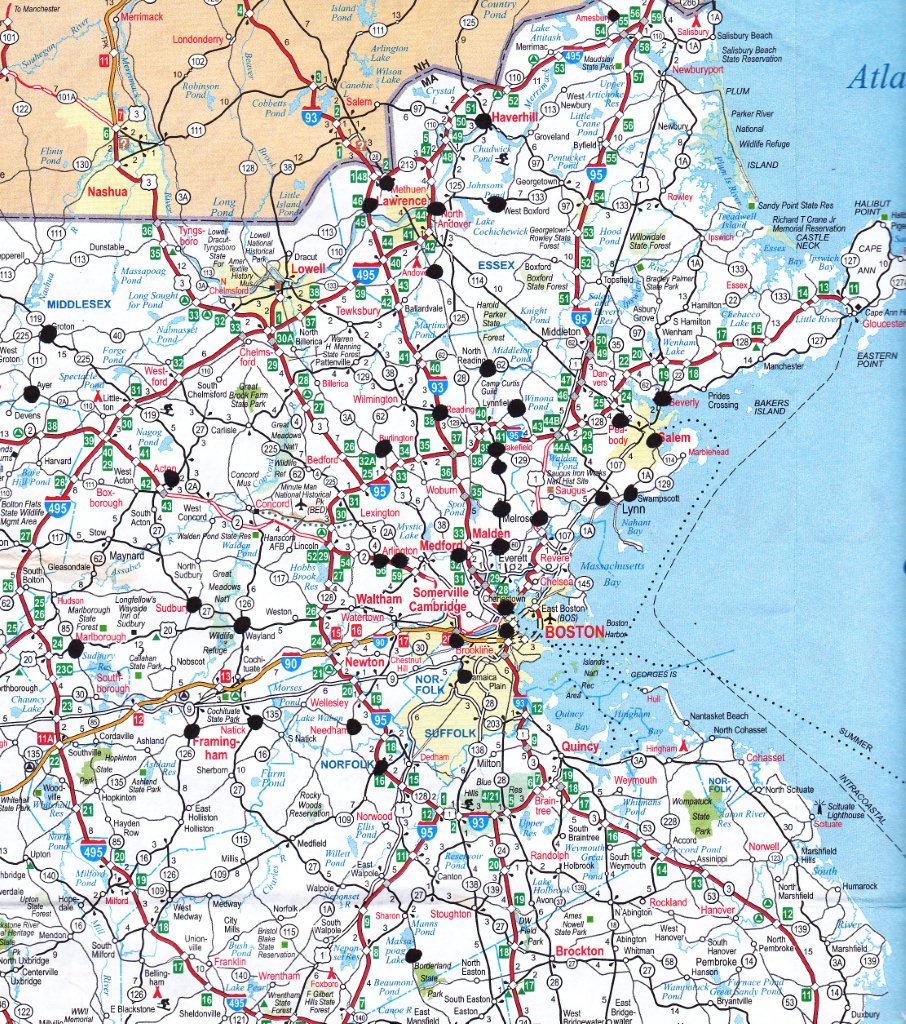

 I recently came across this article written by Dr. Reuer about the benefits of using music for yourself. I really believe it’s wonderful to see the applications of music therapy in everyone’s everyday lives.
I recently came across this article written by Dr. Reuer about the benefits of using music for yourself. I really believe it’s wonderful to see the applications of music therapy in everyone’s everyday lives.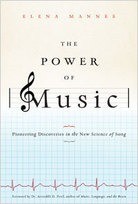 From early beginnings in the womb until the late stages of adulthood, music plays an important role in human growth, development, and sustainment. Music— to be defined here as organized sound— is an essential component of most cultures, coloring the world through melodies, harmonies, rhythm, and lyrics. Humans use music as a form of emotional expression, as well as a group bonding activity through participation in orchestras, bands, concerts, and casual gatherings.
From early beginnings in the womb until the late stages of adulthood, music plays an important role in human growth, development, and sustainment. Music— to be defined here as organized sound— is an essential component of most cultures, coloring the world through melodies, harmonies, rhythm, and lyrics. Humans use music as a form of emotional expression, as well as a group bonding activity through participation in orchestras, bands, concerts, and casual gatherings.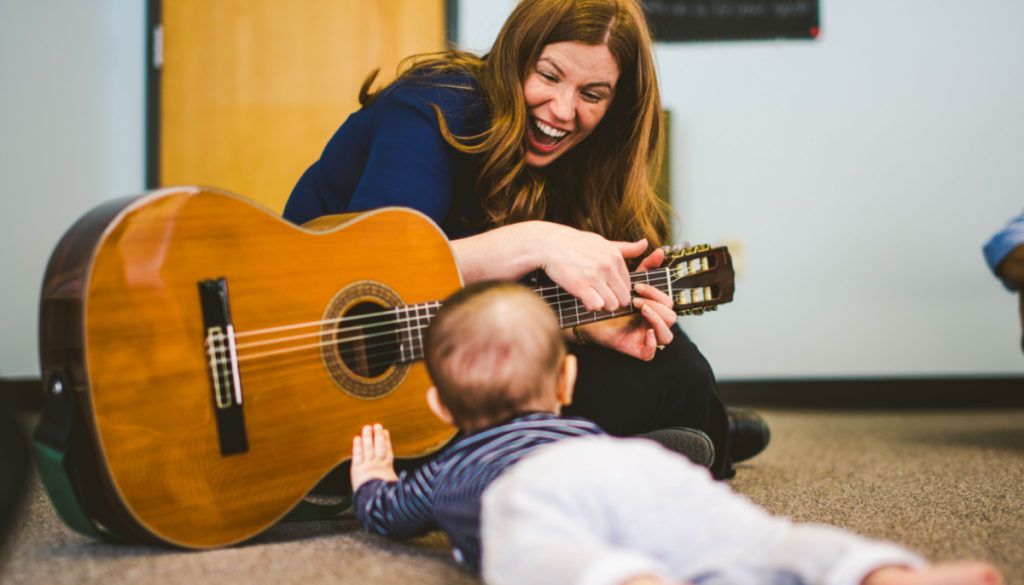
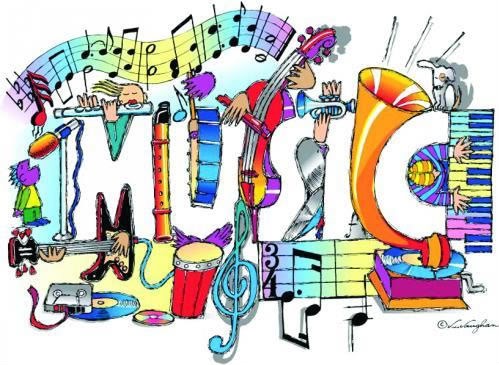 So, I must admit I was sad today when I couldn’t find any Christmas music on the radio. Even though I’ve become quite a Christmas music snob with my Putumayo CD’s and a few new Pandora stations, when I was flicking stations in the car today, I was hoping for a familiar version of Jingle Bells or Walking in a Winter Wonderland.
So, I must admit I was sad today when I couldn’t find any Christmas music on the radio. Even though I’ve become quite a Christmas music snob with my Putumayo CD’s and a few new Pandora stations, when I was flicking stations in the car today, I was hoping for a familiar version of Jingle Bells or Walking in a Winter Wonderland.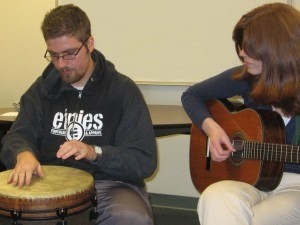 Meredith: In a typical individual music therapy session, the music therapist and client will engage in a variety of musical experiences including:
Meredith: In a typical individual music therapy session, the music therapist and client will engage in a variety of musical experiences including: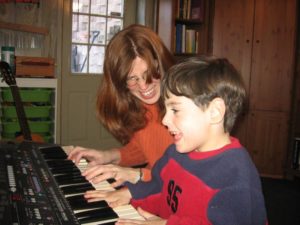 Meredith: One on One music therapy sessions are a great way to target and increase skills in the following areas:
Meredith: One on One music therapy sessions are a great way to target and increase skills in the following areas: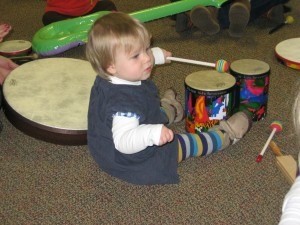 I said it again this month at the Melrose Public Library program during a music therapy session.
I said it again this month at the Melrose Public Library program during a music therapy session.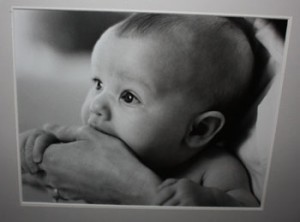 It took me years of experience and learning about early childhood development and music, but now I know that if I’m still getting that deer in the headlights look, I need to do the song again, and again, and again, until the young children who are participating in my music groups are no longer in panic mode. Once their facial expressions relax and they begin to look at me with the expression that says, “Oh, okay…tell me more,” then I know we are ready for more music making. I assure you, as adults we will tire of a song much more quickly than our babies will. But our babies are not bored!
It took me years of experience and learning about early childhood development and music, but now I know that if I’m still getting that deer in the headlights look, I need to do the song again, and again, and again, until the young children who are participating in my music groups are no longer in panic mode. Once their facial expressions relax and they begin to look at me with the expression that says, “Oh, okay…tell me more,” then I know we are ready for more music making. I assure you, as adults we will tire of a song much more quickly than our babies will. But our babies are not bored! Roman Music Therapy Services is announcing that we have teamed up with Papa Gino’s to offer a brand new option for Birthday Parties for children. Here’s a fun way to celebrate your child’s birthday in developmentally and age appropriate ways in which the kids and grown ups all have a blast!
Roman Music Therapy Services is announcing that we have teamed up with Papa Gino’s to offer a brand new option for Birthday Parties for children. Here’s a fun way to celebrate your child’s birthday in developmentally and age appropriate ways in which the kids and grown ups all have a blast!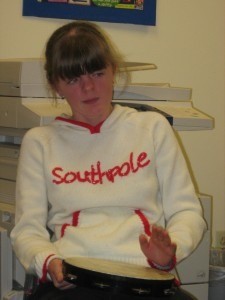 All great questions. I actually had a special education teacher ask me at the beginning on this school year if I had this written down somewhere and I was surprised when I realized I didn’t. So now it is officially in writing.
All great questions. I actually had a special education teacher ask me at the beginning on this school year if I had this written down somewhere and I was surprised when I realized I didn’t. So now it is officially in writing.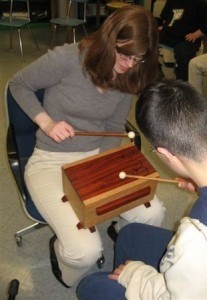 Cool Down
Cool Down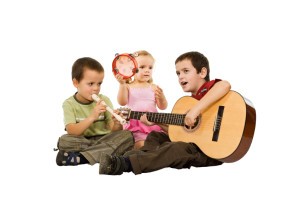 Nothing! There is no prerequisite for successful participation in music therapy. The Board Certified Music Therapists at Roman Music Therapy Services work from a client centered music therapy approach. In this model of therapeutic treatment, a client participates as they are and the music therapist uses the tools of music to meet the client and their needs. The client does not need to do anything! Where the client is is where they are, and the music therapist’s job is to meet the client in that place and help them to move towards their educational and therapeutic goals in the music.
Nothing! There is no prerequisite for successful participation in music therapy. The Board Certified Music Therapists at Roman Music Therapy Services work from a client centered music therapy approach. In this model of therapeutic treatment, a client participates as they are and the music therapist uses the tools of music to meet the client and their needs. The client does not need to do anything! Where the client is is where they are, and the music therapist’s job is to meet the client in that place and help them to move towards their educational and therapeutic goals in the music.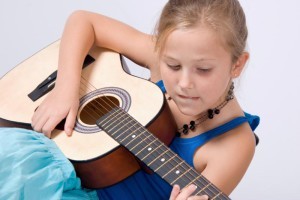 Parents often call me looking for music therapy services because they know that their child “loves” music. They recognize that music is something, or sometimes the one thing, that their child responds to consistently. Maybe the child is singing songs but not using a lot of language, or maybe the child plays instruments with an apparent awareness of musicality.
Parents often call me looking for music therapy services because they know that their child “loves” music. They recognize that music is something, or sometimes the one thing, that their child responds to consistently. Maybe the child is singing songs but not using a lot of language, or maybe the child plays instruments with an apparent awareness of musicality.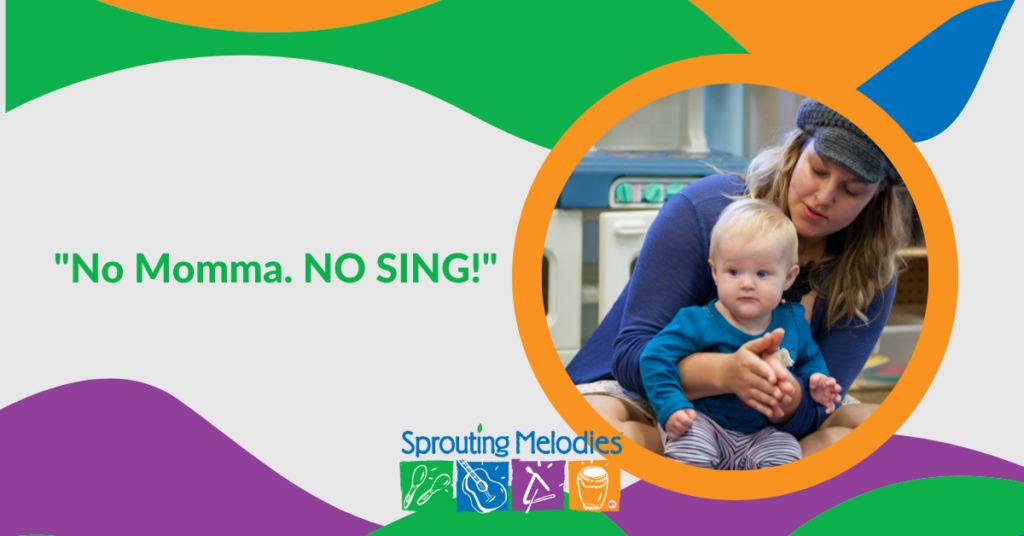
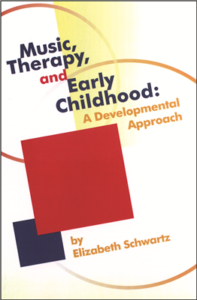
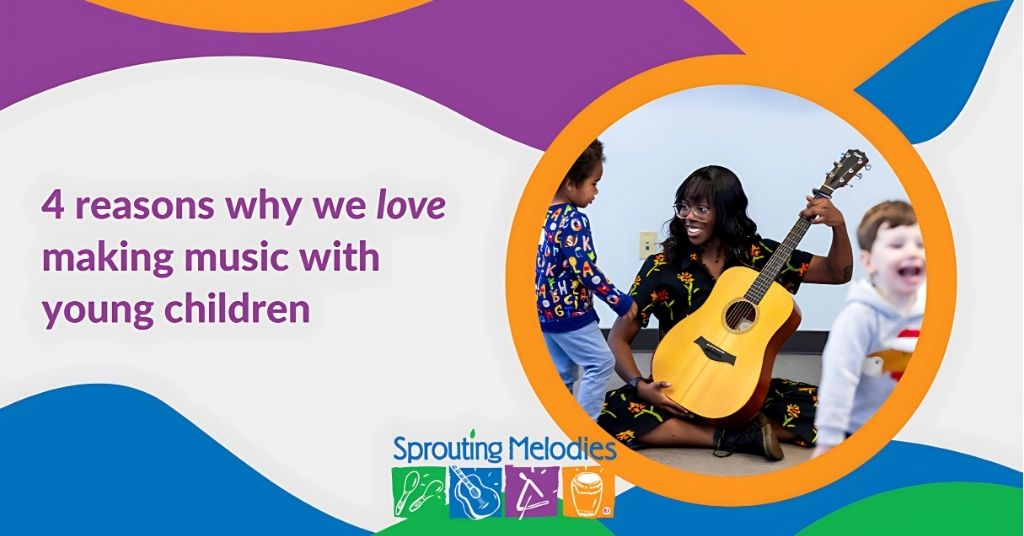
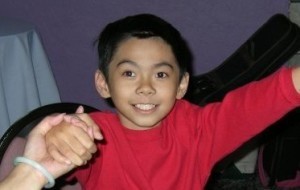 There is nothing like sharing in the simplicity of music making with a child. As a newborn, music is a profound experience that causes the baby to stop and look around, waiting and watching. As children age, they become more and more aware of the environment and still attend to music as if it is a huge presence in the room. I learn a lot from their experience of music.
There is nothing like sharing in the simplicity of music making with a child. As a newborn, music is a profound experience that causes the baby to stop and look around, waiting and watching. As children age, they become more and more aware of the environment and still attend to music as if it is a huge presence in the room. I learn a lot from their experience of music.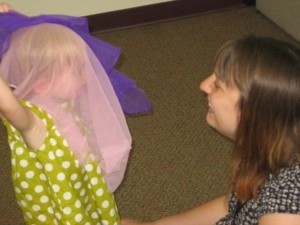 There is a closeness in making music with your child that goes beyond a song. It is our common understanding that songs and lullabies create intimate shared moments for babies and caregivers. With repetition, those shared musical moments create meaningful bonds.
There is a closeness in making music with your child that goes beyond a song. It is our common understanding that songs and lullabies create intimate shared moments for babies and caregivers. With repetition, those shared musical moments create meaningful bonds.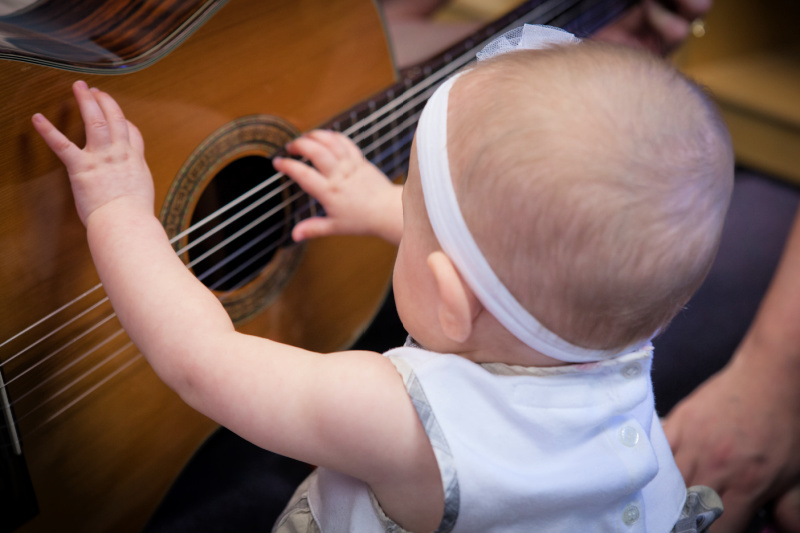

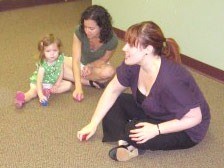 Being a music therapist is a really exciting and dynamic job. At any given moment my car has some sort of collection of instruments in it, which leads all of the passengers in my car to ask, “what is that noise?”. Typically it is a bag of tambourines, maracas, bells, frame drums, rain sticks…you name it, it’s probably in my bag of tricks. And that bag of tricks and I travel all over to make music with some really outstanding individuals.
Being a music therapist is a really exciting and dynamic job. At any given moment my car has some sort of collection of instruments in it, which leads all of the passengers in my car to ask, “what is that noise?”. Typically it is a bag of tambourines, maracas, bells, frame drums, rain sticks…you name it, it’s probably in my bag of tricks. And that bag of tricks and I travel all over to make music with some really outstanding individuals.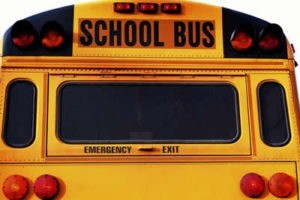 I start my day at 8:30 AM at Charlestown High School. Here, I work with a group of teenagers with various disabilities. We focus a lot on social interaction and movement in this group. So, for example, I’ll set up an instrument improvisation where everyone chooses and instrument and then we all jam until I give the cue to trade instruments. The kids then get up and ask their peers if they can have their instrument. The physical aspect of this is significant for most of these kids, as many of them have physical challenges, and the chance for appropriate social interaction is incredibly important. It really gives them an opportunity to have a successful social exchange and it is a wonderful model for them to carry over outside of the session.
I start my day at 8:30 AM at Charlestown High School. Here, I work with a group of teenagers with various disabilities. We focus a lot on social interaction and movement in this group. So, for example, I’ll set up an instrument improvisation where everyone chooses and instrument and then we all jam until I give the cue to trade instruments. The kids then get up and ask their peers if they can have their instrument. The physical aspect of this is significant for most of these kids, as many of them have physical challenges, and the chance for appropriate social interaction is incredibly important. It really gives them an opportunity to have a successful social exchange and it is a wonderful model for them to carry over outside of the session.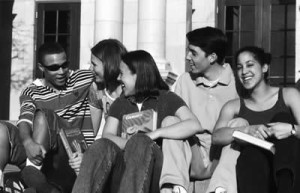 Now, I’m on to the
Now, I’m on to the  So, there you have it. That is what a typical day looks like for me.
So, there you have it. That is what a typical day looks like for me.